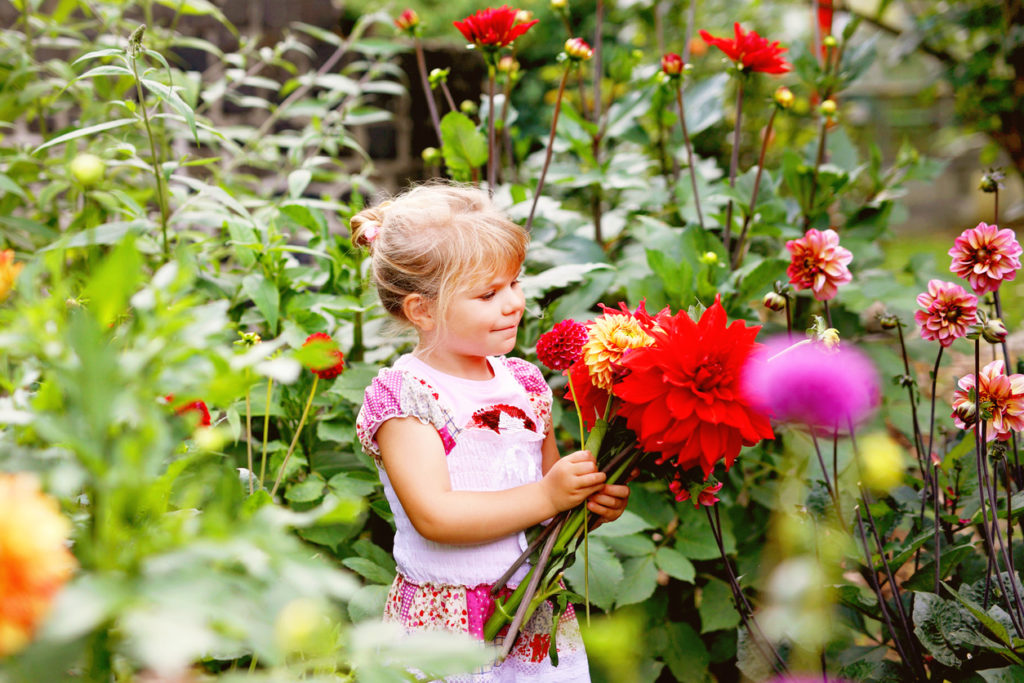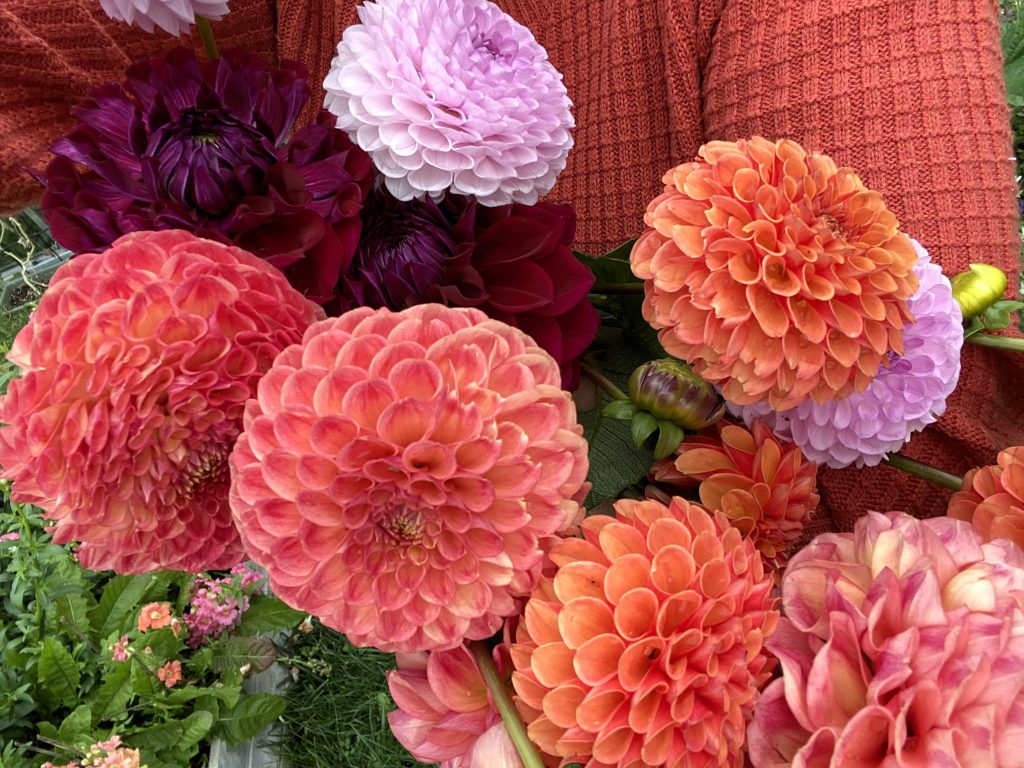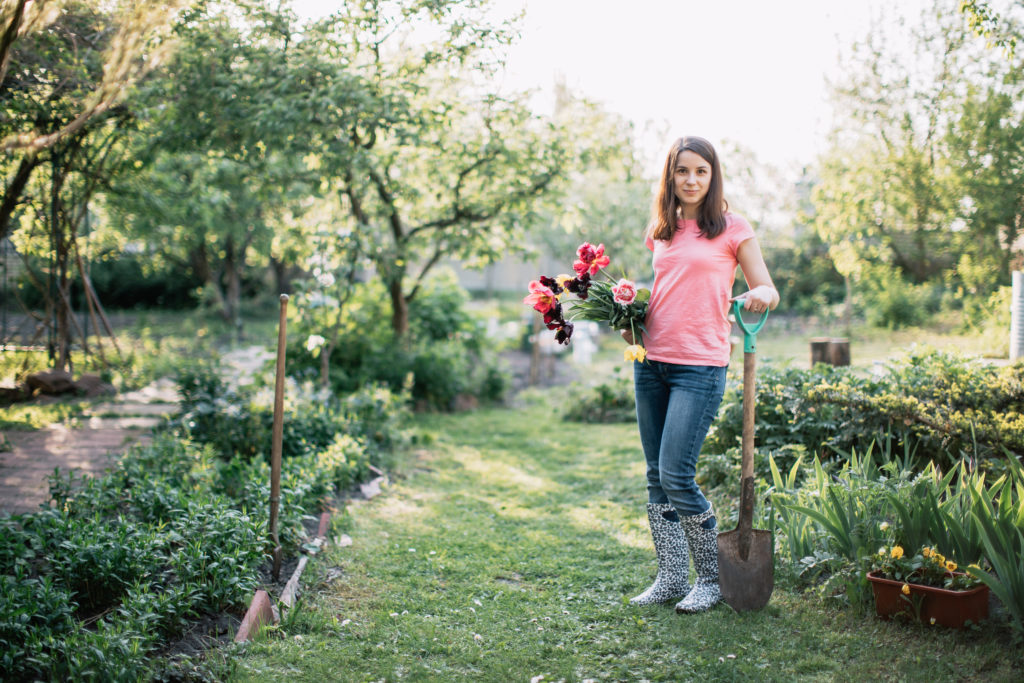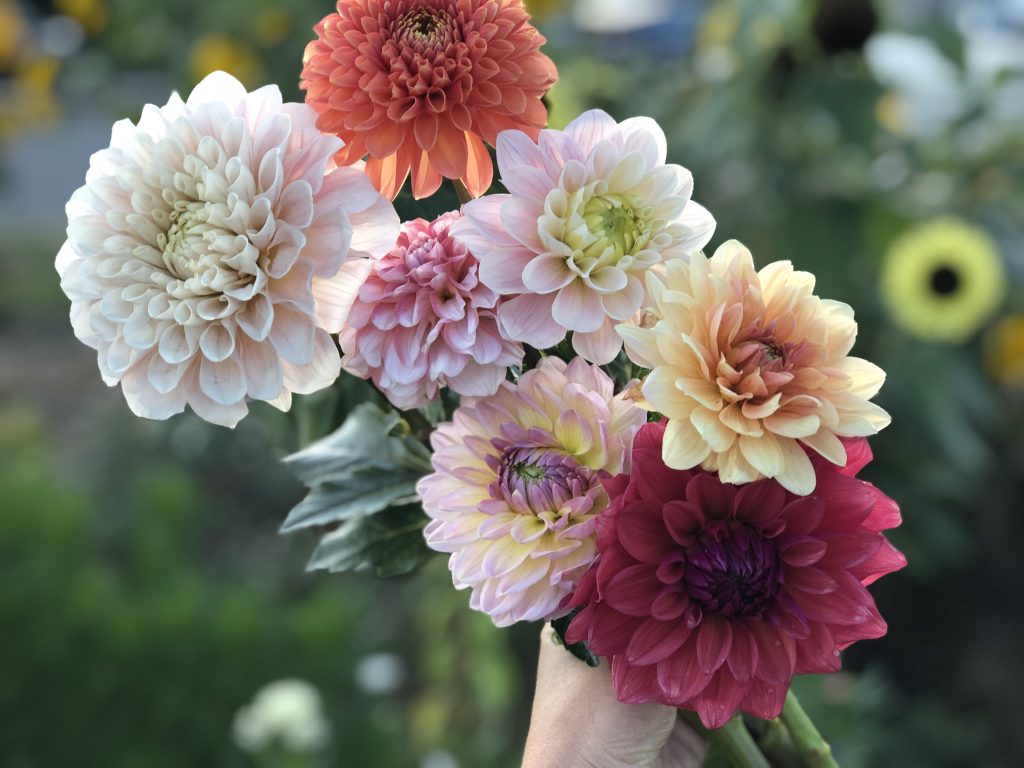Your Guide to Growing Dahlias

Dahlias are a gardener’s delight, offering a spectacular array of colors and forms that can add magic any sunny garden space. Their vibrant blooms not only brighten the summer garden, but also serve as excellent cut flowers for indoor arrangements. With the right care and attention, you can enjoy these stunning flowers in your Ontario garden from mid-summer until the first frost. Want to know how to grow dahlias at home? Read on for your complete guide to growing dahlias!
Dahlia Varieties
Dahlias come in various sizes, colors, and bloom types, ranging from petite pompons to large dinner-plate varieties. Even though they won’t be planted until after our last frost, late winter is time to find and purchase dormant dahlia tubers! The full selection of dahlias arrive in TERRA store locations in early February each season. When selecting dahlias for your garden, consider the following:
- Color Palette: Dahlias are available in a spectrum of colors. Selecting a cohesive color scheme that coordinates with your existing late-summer garden can create a harmonious and visually appealing garden display.
- Bloom Size and Form: Decide whether you prefer small, medium, or large blooms. Large-flowered dahlias make a bold statement, while smaller varieties can add subtle charm. Mix and match in different garden areas!
- Plant Height: Dahlia plants can vary in height from compact 12-inch varieties to towering 6-foot plants. Choose a height that complements your garden design and space, making sure to place them in your planting plan accordingly.

Planting Dahlias
Proper planting sets the foundation for healthy dahlia growth and bountiful blooms. Follow these steps to ensure success when growing dahlias:
- Timing: Buy now, plant later. Plant dahlia tubers in the late Spring, after the danger of frost has passed and the soil temperature reaches at least 10°C. In southern Ontario, this typically occurs in late May.
- Location: Choose a sunny spot that receives at least 6 to 8 hours of direct sunlight daily, and remember to keep the mature plant height in mind.
- Soil Preparation: Dahlias thrive in well-draining, fertile soil. Amend heavy clay soils with compost or triple mix to improve drainage and fertility.
- Planting Depth and Spacing: Dig a hole about 4-6 inches deep. Place the tuber horizontally with the “eyes” facing up, then cover with 2 to 3 inches of soil. Space plants 1.5 to 2 feet apart, depending on the variety’s mature size.

Essential Gear & Tools
Having the right tools can make growing dahlias more simple and manageable. Here are our most-used items for the growing season:
- Garden Fork and/or Spade: A garden fork is useful for loosening compact soil, working in amendments like compost, and for lifting tubers at the end of the season. A good spade makes planting anything easier, and dahlias are no exception!
- Stakes or Supports: Tall dahlia varieties require support to prevent stems from breaking. Use tall stakes or tomato cages, and tie stems gently with soft twine.
- Pruning Shears: A must-have! Use sharp, clean shears for deadheading spent blooms and cutting stems for arrangements.
- Watering Can or Hose with Gentle Spray Nozzle: In summer conditions, dahlias need consistent moisture. Water deeply in morning during periods without regular rainfall.

Fertilizing & Care
When planted properly and in the right place, dahlias are relatively easy to grow. For the healthiest possible plant and maximum bloom, however, dahlias benefit from regular feeding and basic good care:
- Watering: Once established, water deeply 2 to 3 times a week when the weather is hot and dry. It’s best to water in early morning, and to avoid wetting the leaves, if possible.
- Fertilizing: Use a blooming plant food every 4-5 weeks (my personal favourite is Acti Sol for Flowers) from June until the end of August.
- Deadheading: Regularly remove spent flowers to encourage continuous blooming and maintain plant health. Harvest cut flowers often – the most you cut, the more stems will grow!

Overwintering Dahlias
In regions with cold winters, such as here in southern Ontario, dahlias can’t stay in the garden once freezing temperatures arrive. For tips on keeping your dahlia tubers after the season, read our post ‘How to Dig & Store Dahlias for Winter’ here.
Tips for Success
As with anything new, it can take some practice to get the hang of growing dahlias. Here are a few additional pro tips for a successful season:
- Pinching: When plants reach about 12 inches in height, pinch out the top growth to encourage bushier plants with more blooms. This feels weird to do, but trust the process!
- Mulching: While mulching can retain soil moisture, avoid heavy mulching directly around dahlia stems, as it can harbor pests and promote rot. Keep the mulch to the open areas between plants for maximum benefit.
- Cutting Flowers: For the longest vase life, cut dahlia flowers in the morning when the blooms are fully open. Use sharp, clean pruners or floral snips. Immediately place stems in fresh, clean water, and change the water daily.

So… are you excited for Spring? Right now is the time to begin! Browse the dozens of dahlia tuber varieties in TERRA stores, or pick through packets of seeds. February and March are the months to get your gear in order, so that you’re ready to begin as soon as the snow melts. The garden of your dreams (including vibrant, healthy dahlias) awaits!
